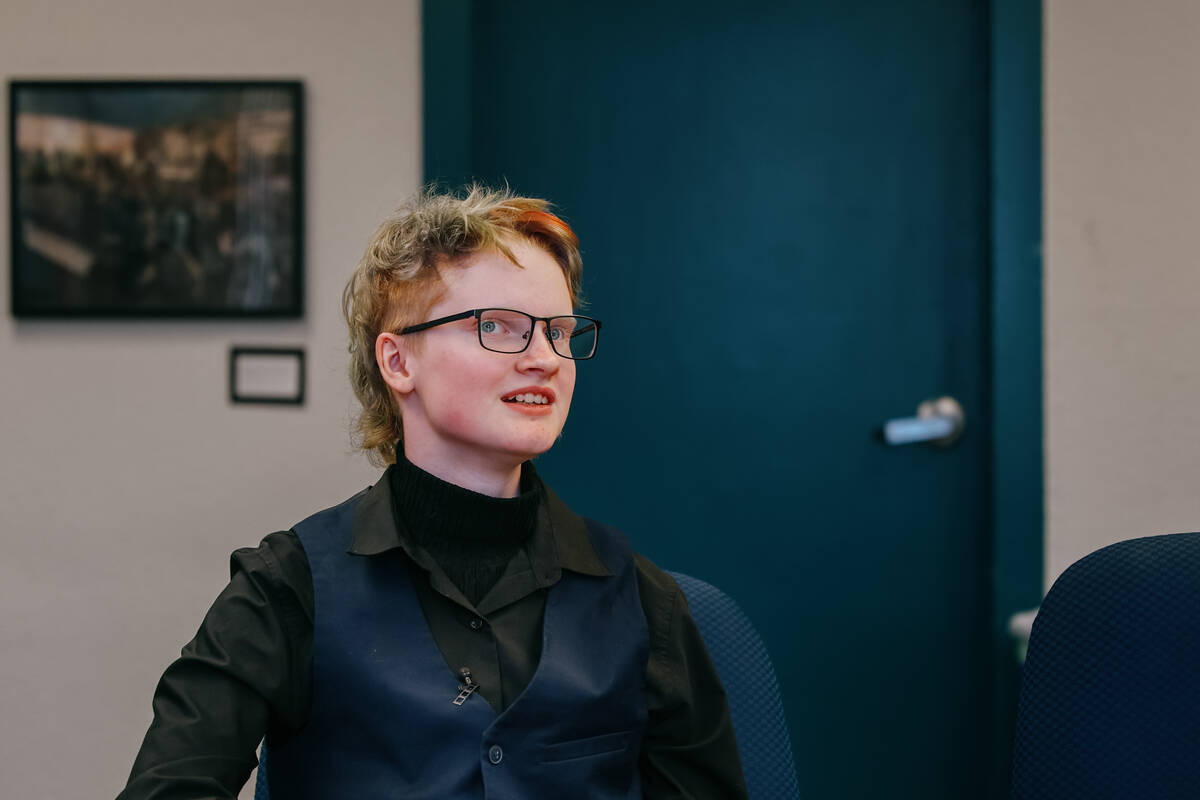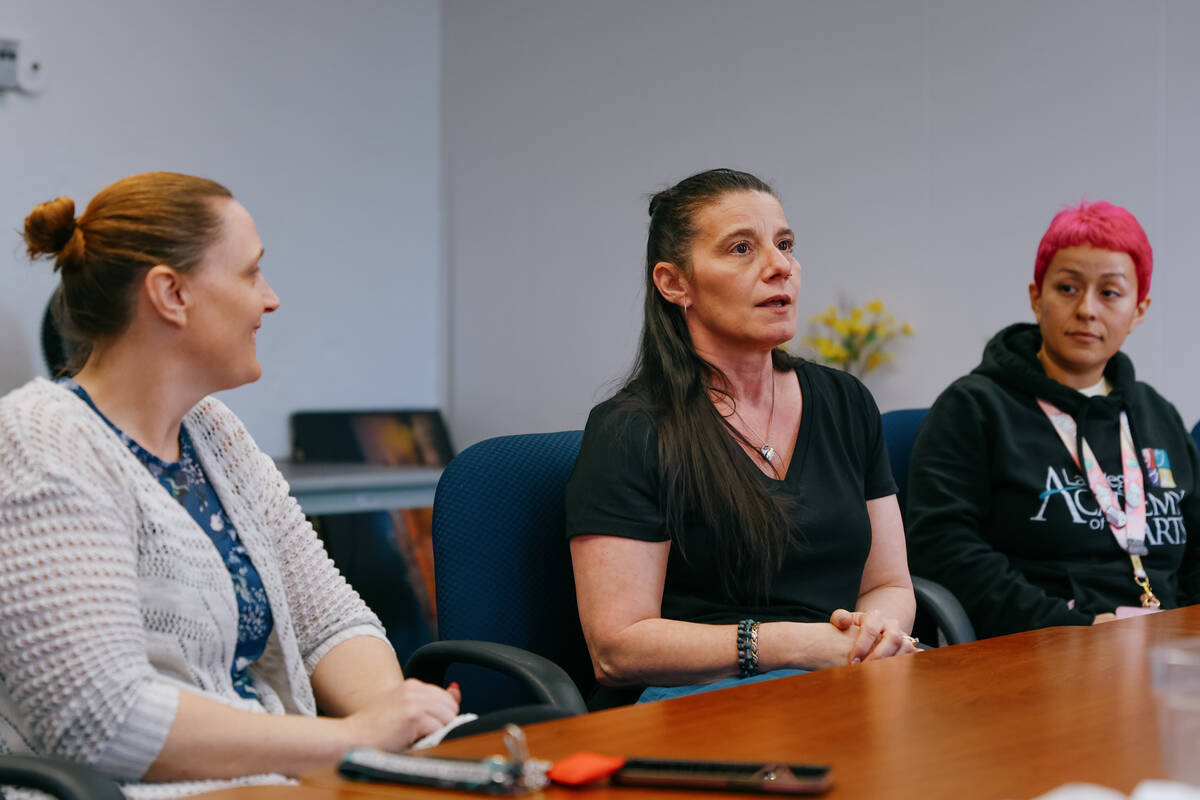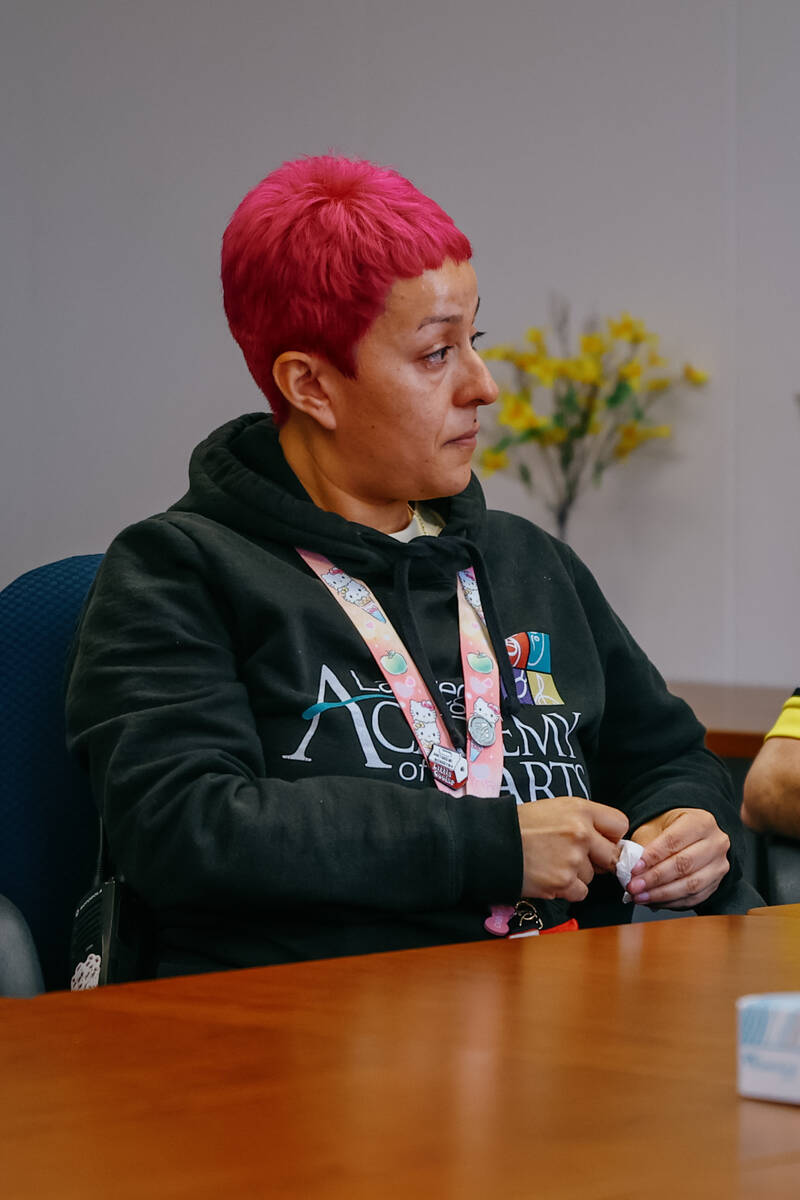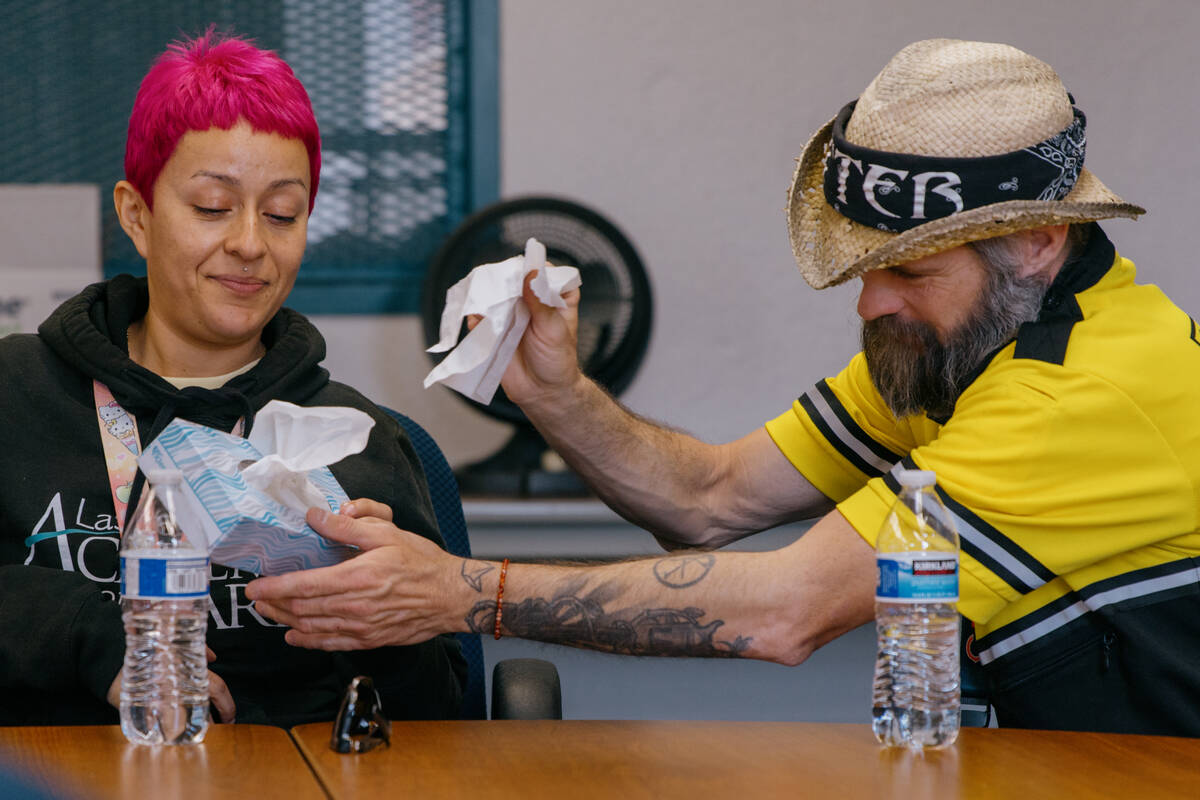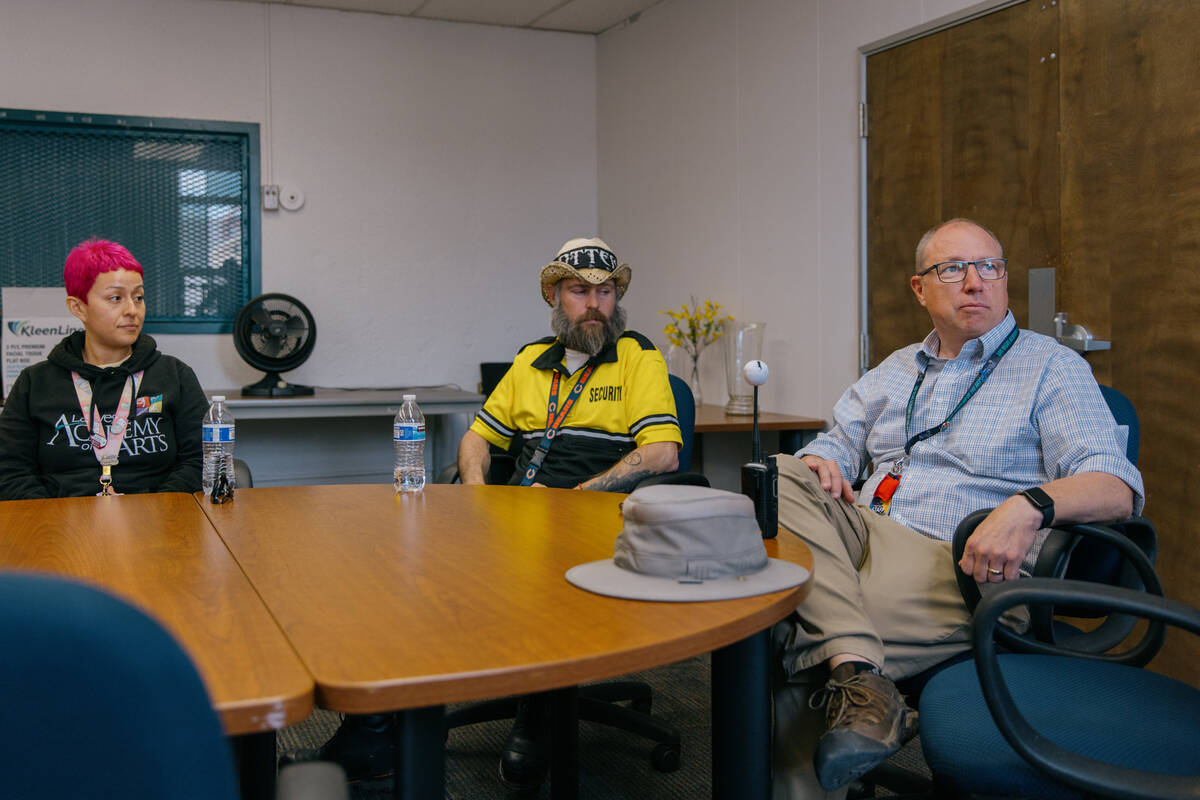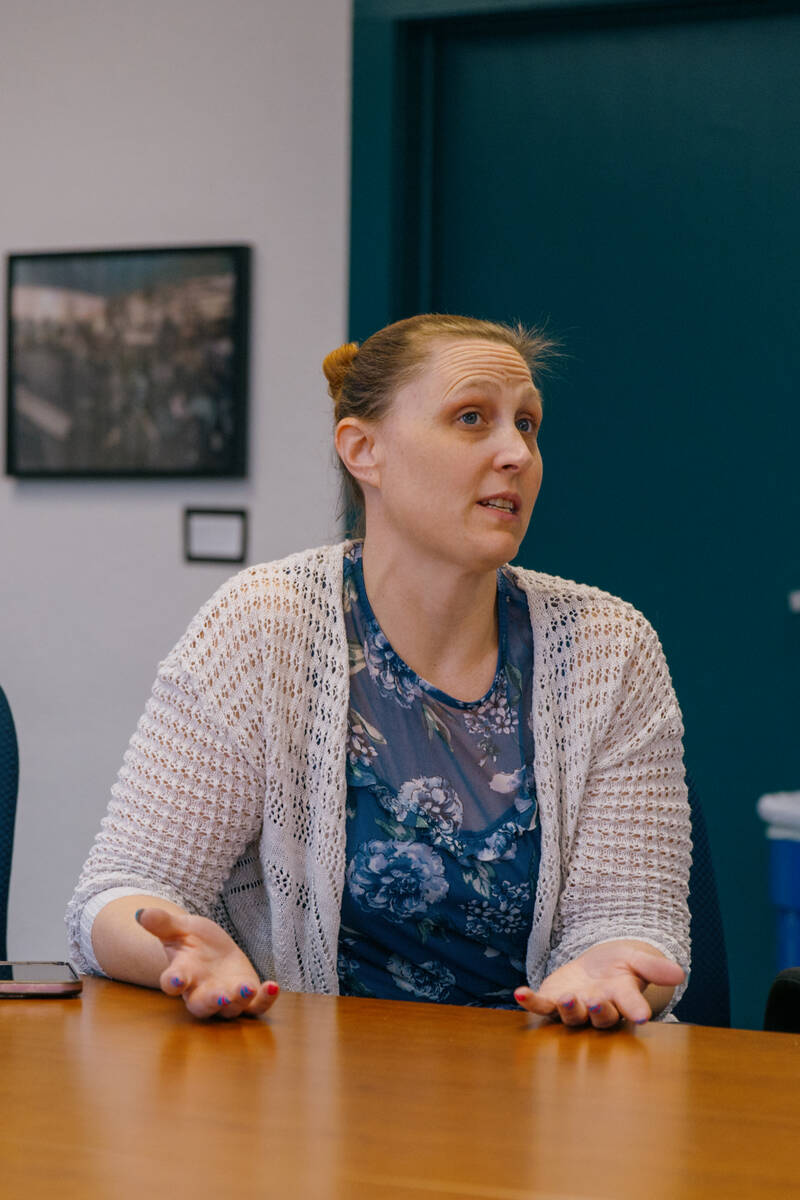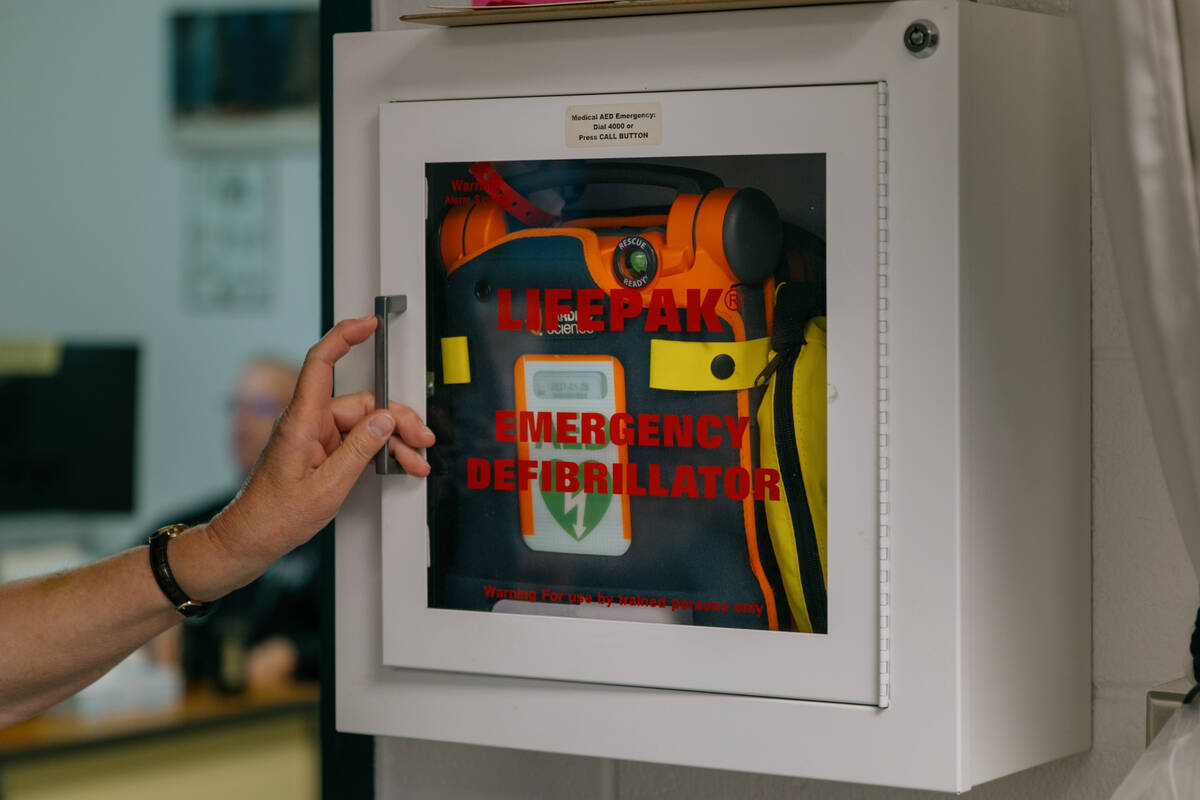‘I should have died’: Teen stresses importance of AEDs after heart scare
Finn Whittacre said she does not remember when her heart stopped for seven minutes that January day.
But the Las Vegas Academy of the Arts faculty and staff who saved her life will never forget it.
“Grateful is probably the most prominent emotion,” Whittacre said to them on Tuesday. “I owe my life to you, quite literally.”
Whittacre, 15, was handing in her biology homework on Jan. 8 when she suddenly fell to the ground. At first, teachers thought the ninth grade student was suffering a seizure. It was only later that she got diagnosed with catecholaminergic polymorphic ventricular tachycardia. The rare condition means that when adrenaline reaches her heart, it causes it to beat out of rhythm. It was an automated external defibrillator, more commonly known as an “AED,” that saved her life.
“The AED was the only thing that could save me because my heart was in ventricular tachycardia, and CPR only helps restarting, like making sure the heart pumps the blood,” Whittacre said.
An AED is a portable medical device designed to analyze the heart rhythm and deliver an electric shock when necessary to restore the heart rhythm to normal. The machines are required in all Clark County School District schools. But the faculty and staff at LVA hope that this incident can serve as a learning opportunity to show just how important it is to know how to use one.
“I wish that the district would use this as an opportunity,” said Helen Wolcott, a science teacher who gave Whittacre CPR that day. “I would love if they required staff to be AED and CPR trained.”
‘I should have died’
Whittacre, who found a way to joke about the incident, is an otherwise healthy teenage girl. She’s an artist who looks forward to going to college, where she plans to major in psychology.
“I’m a massive nerd, and I wear that title with pride,” she said, after she carefully explained the science of her newly diagnosed condition.
One of the dangers of her condition, she said, was that many people never have symptoms before having a severe incident like she did. It was her diagnosis that led to her family also being tested. As it turned out, her father and two of her siblings also have the genetic condition.
“Without me going down, my younger brother or my older sister could have very well gone down,” Whittacre said.
In addition to gratitude, Whittacre said she also feels confused.
“I know so many people that have passed in my life, and to sit here standing pretty healthy for what I went through, it’s kind of weird to know that I’m living against all odds. I should have died that day,” Whittacre said.
Her teacher, Kimberley Truman, feels the luck, too. She thinks about the different outcomes had Whittacre collapsed after the bell rang — just three minutes later — in the hallway. Or, if the faculty and staff had not known to use an AED.
Educators come to the rescue
Faculty and staff teared up while they discussed the event in a room at LVA on Tuesday. The group was also celebrated at an event in March for their lifesaving effort.
Trueman recalled running to Wolcott’s classroom for help. The two began clicking the assist buttons in their classrooms.
“One of my students said, ‘Ms. Trueman, you only need to hit it once.’ I said, ‘there’s a girl on the floor,’” Trueman said.
From there, the team went into action: Trueman contacted Whittacre’s parents, staff member Adam Moore did chest compressions, Wolcott and another staff member, Rosemarie Rosales, focused on Whittacre’s breathing.
Assistant Principal Josh Hager had seen thousands of seizures due to his son’s epilepsy, he said. When he saw Whittacre, he could tell it wasn’t a seizure. Rosales brought the AED from the nurse’s office.
“We worked together as a unit,” Trueman said. “Everybody had a role and we knew what it was and we did it and it worked.”
Next, an ambulance took over and took Whittacre to the hospital. Hager, who followed the ambulance to the hospital as per school district policy, said he still remembers the relief he felt when he heard Whittacre scream from her hospital room.
“You can’t scream if your heart’s not working,” he said.
AED critical
After Whittacre’s health scare, more faculty and staff signed up for AED training at LVA.
“You never think this is going to be real, but thank God you do it quarterly and you review, and it’s muscle memory, because at that point, we were just doing what we would have done in a drill just for a much longer period of time,” Hager said.
There is currently a bill in the Nevada Legislature known as the “Smart Heart Law” which would require AEDs to be on-site and readily accessible in all high school athletic venues, and for emergency action plans to be written out and put in place at every high school.
Assembly Bill 454 has its next hearing in front of the education committee on Thursday.
Whittacre returns to applause
When Whittacre came back to school on Jan. 28, the whole class clapped.
She now takes beta blockers and has an implantable cardioverter-defibrillator, which is designed to shock her if she were to have another episode.
Her message: “Live life in the present, because no matter how healthy you are, or how much you prepare for the future, one day you could just fall down on a biology classroom floor.”
Contact Katie Futterman at kfutterman@reviewjournal.com. Follow @ktfutts on X and @katiefutterman.bsky.social.



